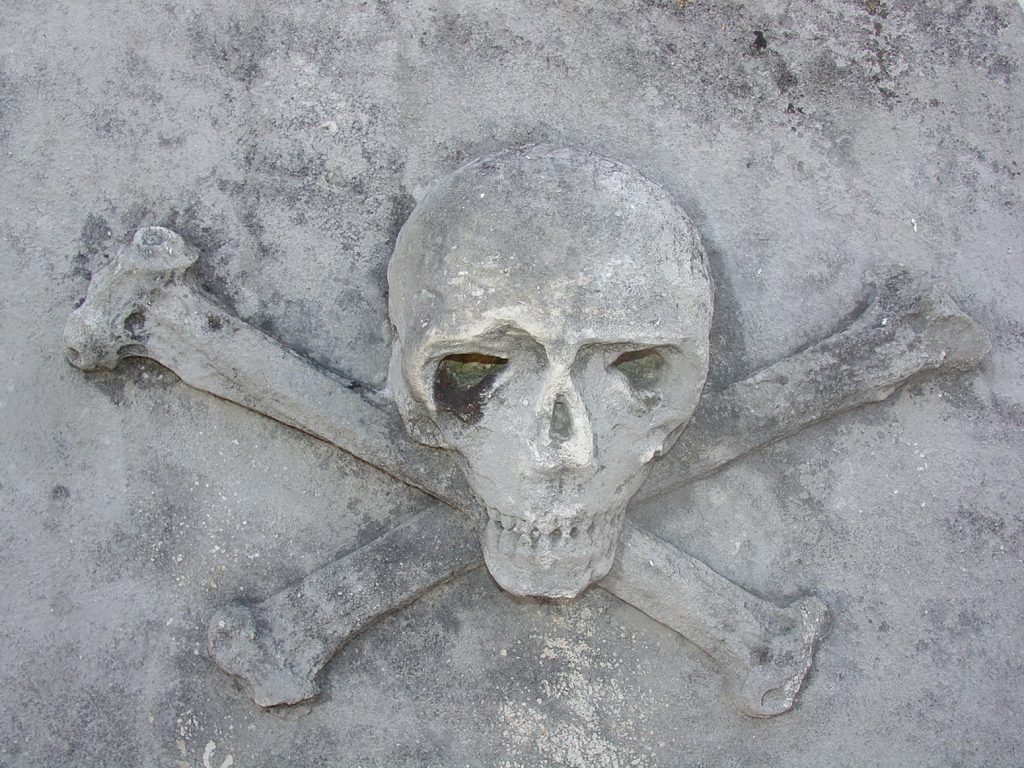 A case arising out of the State of Louisiana First Circuit Court of Appeal considers whether defendants should have been permitted to raise certain peremptory contractual exceptions in the trial court: namely, objections of prescription, peremption, no cause of action, no right of action, and a dilatory exception of vagueness. See LA. C.C.P. Art. 927. Unfortunately for the Plaintiffs, the trial court sustained all of defendant’s exceptions, and dismissed their case.
A case arising out of the State of Louisiana First Circuit Court of Appeal considers whether defendants should have been permitted to raise certain peremptory contractual exceptions in the trial court: namely, objections of prescription, peremption, no cause of action, no right of action, and a dilatory exception of vagueness. See LA. C.C.P. Art. 927. Unfortunately for the Plaintiffs, the trial court sustained all of defendant’s exceptions, and dismissed their case.
The case involved two plaintiffs Ryan and Vicki Williams—who entered a contractual agreement with Genuine Parts Company to reopen and operate a previously closed NAPA Auto Parts store in Ponchatoula, Louisiana. The Plaintiffs invested approximately $60,000 to start up the store, and obtained a six-year loan guaranteed by the Genuine Parts Company for the remainder of the costs. Plaintiffs were later offered the chance to operate another NAPA Auto Parts store in Hammond, Louisiana, but when plaintiffs declined that opportunity, Genuine Parts Company contracted with Jeffrey Boone to operate that Hammond store instead. After that, plaintiffs were told their financing would not be renewed, because of their NAPA store’s declining performance. When plaintiff’s loan matured, Genuine Parts Company acquired it, and liquidated plaintiff’s store inventory. Plaintiffs then filed a lawsuit for damages, because of the alleged unfair and deceptive practices by Genuine Parts company and Jeffrey Boone. In its response, Genuine Parts Company filed the peremptory exceptions mentioned above. Mr. Boone also adopted the same exceptions in his response. The trial court granted all exceptions and dismissed plaintiff’s case, so plaintiffs appealed.
Defining the Exceptions
 Louisiana Personal Injury Lawyer Blog
Louisiana Personal Injury Lawyer Blog


 Summary judgments are procedural devices used when no genuine issue of material fact exist that should be litigated in a full trial. The burden of proving that there is no issue as to material facts is on the party who is seeking the summary judgment. Once the moving party establishes that no genuine issue of material fact exists, the burden then shifts to the opposing party to present evidence that indicates that there is in fact a dispute as to material facts. A recent lawsuit arising from Ascension Parish Louisiana discusses the standards used by courts to evaluate summary judgment motions.
Summary judgments are procedural devices used when no genuine issue of material fact exist that should be litigated in a full trial. The burden of proving that there is no issue as to material facts is on the party who is seeking the summary judgment. Once the moving party establishes that no genuine issue of material fact exists, the burden then shifts to the opposing party to present evidence that indicates that there is in fact a dispute as to material facts. A recent lawsuit arising from Ascension Parish Louisiana discusses the standards used by courts to evaluate summary judgment motions. Pursue your claim in time or forfeit your right to recovery. That is what the Louisiana doctrine of prescription generally holds. This doctrine bars a claimant’s right of recovery when he or she fails to exercise it within a certain time period. In Louisiana, the Medical Malpractice Act governs the prescriptive period for medical malpractice actions. This statute provides two options as to the starting point of the prescriptive period: the date of the alleged tortious act or the date of the discovery of the tortious act. This second option is known as the discovery rule, and was recently discussed by the Louisiana Third Circuit Court of Appeals.
Pursue your claim in time or forfeit your right to recovery. That is what the Louisiana doctrine of prescription generally holds. This doctrine bars a claimant’s right of recovery when he or she fails to exercise it within a certain time period. In Louisiana, the Medical Malpractice Act governs the prescriptive period for medical malpractice actions. This statute provides two options as to the starting point of the prescriptive period: the date of the alleged tortious act or the date of the discovery of the tortious act. This second option is known as the discovery rule, and was recently discussed by the Louisiana Third Circuit Court of Appeals. If a person defaults on student loan payments, the loan issuer can obtain a order from the court, directing an employer to withhold money from the person’s earnings until the defaulted loan has been paid in full. A Bossier Parish School Board (“BPSB”) employee stopped paying her student loans. In order to recover the default amount, the student loan company hired a collection agency, Pioneer Credit Recovery Inc. (“Pioneer”) top. Pioneer sent BPSB an order from a court (making them a garnishee) requiring it to deduct the employee’s earnings to a sufficient amount to make payments on the loan. BPSP complied, taking money out of the employee’s paycheck monthly, until the default amount was completely satisfied.
If a person defaults on student loan payments, the loan issuer can obtain a order from the court, directing an employer to withhold money from the person’s earnings until the defaulted loan has been paid in full. A Bossier Parish School Board (“BPSB”) employee stopped paying her student loans. In order to recover the default amount, the student loan company hired a collection agency, Pioneer Credit Recovery Inc. (“Pioneer”) top. Pioneer sent BPSB an order from a court (making them a garnishee) requiring it to deduct the employee’s earnings to a sufficient amount to make payments on the loan. BPSP complied, taking money out of the employee’s paycheck monthly, until the default amount was completely satisfied.
 A fire at a building you own cannot only damage your property but others as well. So what happens when a fire starts at your property and then quickly spreads to others, are you liable for their losses as well? The following case demonstrates what happens in court when a piece of real estate catches fire, causing damage to a neighboring property.
A fire at a building you own cannot only damage your property but others as well. So what happens when a fire starts at your property and then quickly spreads to others, are you liable for their losses as well? The following case demonstrates what happens in court when a piece of real estate catches fire, causing damage to a neighboring property. 
 Antitrust laws protect competition and prevent monopolies. Ultimately, they are meant to protect consumers by ensuring healthy competition. Yet it is a common misconception that antitrust laws protect individual competitors in the marketplace; that each unique competitor is itself the competition that antitrust laws seek to protect. False. Antitrust laws are designed to protect competition – the integrity of the marketplace in which competition occurs – not individual competitors. See
Antitrust laws protect competition and prevent monopolies. Ultimately, they are meant to protect consumers by ensuring healthy competition. Yet it is a common misconception that antitrust laws protect individual competitors in the marketplace; that each unique competitor is itself the competition that antitrust laws seek to protect. False. Antitrust laws are designed to protect competition – the integrity of the marketplace in which competition occurs – not individual competitors. See A recent case arising out of Tensas Parish, Louisiana, highlights the importance of checking on leases that burden any land before purchase. “Legacy lawsuits” are claims that oil and gas operations caused contamination on a property and generally name any operators who worked at the property and could have contributed to the contamination. In this aspect, the case out of Tensas Parish is no different. This case involves a legacy lawsuit where landowners purchased a property in 2002, but the property was subject to mineral leases/servitudes as early as the 1940s by different oil and gas companies.
A recent case arising out of Tensas Parish, Louisiana, highlights the importance of checking on leases that burden any land before purchase. “Legacy lawsuits” are claims that oil and gas operations caused contamination on a property and generally name any operators who worked at the property and could have contributed to the contamination. In this aspect, the case out of Tensas Parish is no different. This case involves a legacy lawsuit where landowners purchased a property in 2002, but the property was subject to mineral leases/servitudes as early as the 1940s by different oil and gas companies. The case may have seemed simple enough to the courts at first: interpret a contract. The main question in the case before the U.S. Court of Appeals for the Fifth Circuit was whether to apply the business’ projected income versus the actual income when calculating the coinsurance reward. The Court had to determine whether the language in the insurance policy and contract was clear as to which income it referred to. The Court applied Louisiana law, and indicated that courts must apply the contract as a whole, rather than in separate parts. The Court also applied the same law, which prior Louisiana Supreme Court decisions established, in determining that a court must enforce a contract as it is written when the contract’s meaning is clear and unambiguous.
The case may have seemed simple enough to the courts at first: interpret a contract. The main question in the case before the U.S. Court of Appeals for the Fifth Circuit was whether to apply the business’ projected income versus the actual income when calculating the coinsurance reward. The Court had to determine whether the language in the insurance policy and contract was clear as to which income it referred to. The Court applied Louisiana law, and indicated that courts must apply the contract as a whole, rather than in separate parts. The Court also applied the same law, which prior Louisiana Supreme Court decisions established, in determining that a court must enforce a contract as it is written when the contract’s meaning is clear and unambiguous.